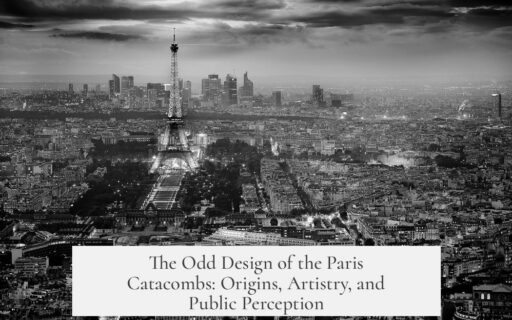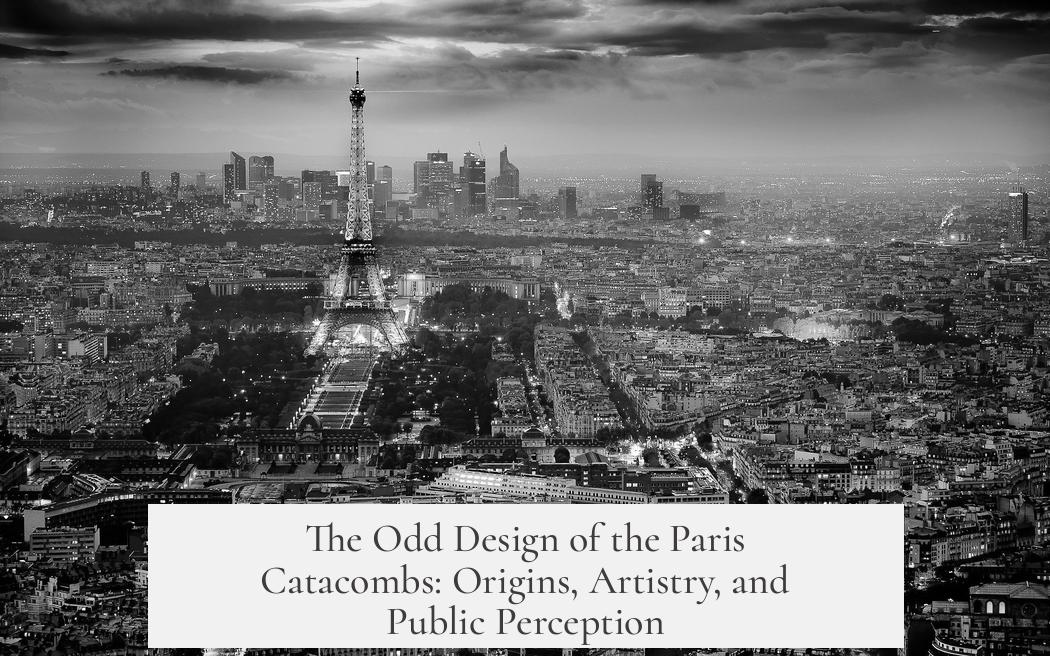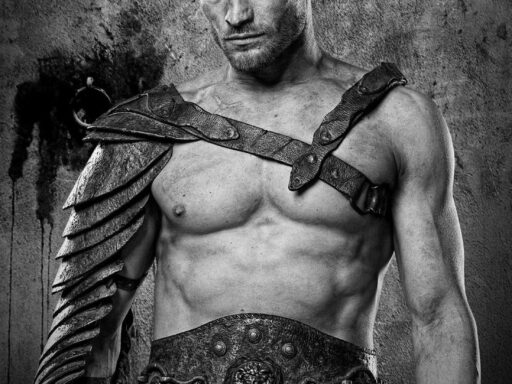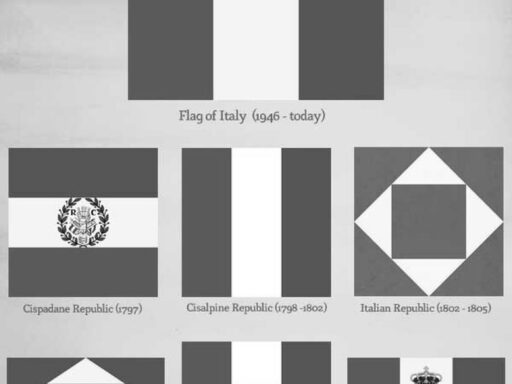The Paris Catacombs appear “weird” because they combine a practical solution with artistic expression, using the bones of about six million people arranged to remind visitors of mortality while reinforcing an underground structure in a unique and monumental way.
The catacombs were created in the late 18th century due to urgent public health concerns. Parisian cemeteries became overcrowded and unsafe, especially after an incident where a collapsed mass grave caused corpses to invade a basement. To prevent such hazards, cemeteries closed, and bones were transferred underground into the city’s former limestone quarries. These quarries were themselves dangerous, prone to collapse, so stabilizing them became critical.
In 1785, bones from the closed Cimetière des Innocents began their journey into the quarries. Carts covered in black veils carried skeletons by night in solemn processions, supervised by priests chanting hymns. These bones were initially dumped in heaps without much organization. The French Revolution interrupted early efforts to arrange these remains properly, leaving the underground site as a chaotic ossuary for about two decades.
A turning point came with Louis Etienne François Héricart de Thury, who took charge in 1809. An engineer and scientist, Héricart de Thury’s goal extended beyond simple bone storage. He aimed to consolidate the galleries of quarries, ensuring safety for Parisians living above and workers below. At the same time, he saw the ossuary as an architectural project that combined engineering and aesthetics.
The bones were integrated into the quarries’ structural system. Larger bones formed retaining walls (the “hague”), while smaller bones filled the cores (the “bourrage”). This stacking system not only stabilized the underground passages but also created visually striking patterns. These passages were made accessible, safe, and suitable for visitors.
This practical approach objectively seems strange or “weird,” but it follows a European tradition. Ossuaries like the Sedlec Ossuary in the Czech Republic or the Capuchin Crypt in Rome had, for centuries, arranged human bones into artistic displays. These arrangements served as vanitas and memento mori—reminders of life’s transience and death’s inevitability.
Inscriptions carved into the catacombs echo this philosophical tradition. Phrases such as “How you see yourself, I saw myself once…” prompt visitors to reflect on mortality and humility. These messages are part of about 80 engraved plaques sourced from scriptures, poets, and philosophers. Decorations include Doric pillars and altars, turning the catacombs into a hybrid between a religious monument, museum, and tourist site.
In addition to its symbolic function, the catacombs had educational purposes. Héricart de Thury added a mineralogy cabinet showcasing fossils and a pathology section exhibiting diseased bones, inviting scientific curiosity beyond the macabre spectacle.
The artistic design of the bone arrangements remains partly mysterious. Héricart de Thury’s writings do not detail who organized or intended the artistic bone patterns. Scholars speculate that workers may have applied their traditions and creativity spontaneously, relying on widespread European ossuary customs familiar at the time.
Contemporary reactions often viewed the bone art not as grotesque but as solemn and even comforting. An 1812 article described the catacombs as a “palace of Death” where art softened death’s harshness, creating mosaics from human remains that inspired deep contemplation rather than fear.
Ultimately, the Paris Catacombs are not merely a mass grave but a vast monument blending engineering, art, history, and philosophy. Louis Etienne François Héricart de Thury’s vision made them an underground “Disneyland of the Dead,” attracting visitors fascinated by both their practical ingenuity and their artistic solemnity.
| Aspect | Explanation |
|---|---|
| Function | Ossuary for remains of six million people after cemeteries closed. |
| Engineering | Bone arrangements stabilize dangerous quarries underground. |
| Art & Symbolism | Bones creatively stacked to remind visitors of mortality. |
| Historical Tradition | Follows longstanding European ossuary decoration customs. |
| Philosophy | Inscribed texts serve as memento mori to reflect on life’s fragility. |
| Tourism & Education | Combines monument, museum, and tourist attraction aspects. |
- The catacombs solved health and structural hazards in 18th-century Paris.
- Bones arranged not just practically but decoratively to inspire reflection.
- Louis Etienne François Héricart de Thury transformed it into an architectural project.
- The bone art follows a long European tradition of ossuaries as memento mori.
- Inscriptions add philosophical depth about death and life.
- Scientific displays supplemented the monument’s educational role.
- Visitors historically found the “weird” bone decorations solemn and thought-provoking.
Why Did They Make the Paris Catacombs So Weird?

The Paris Catacombs appear weird because they are a unique blend of practicality, art, and philosophy. What started as a grim necessity—housing six million skeletons from overcrowded cemeteries—transformed into an underground monument that combines engineering, decorative bone arrangements, and deep reflections on life and death.
Let’s unpack why these catacombs developed their eerie but captivating character—because, after all, it’s not every day you visit a place that’s equal parts graveyard, museum, and theme park for the dead.
How Did It All Begin? The Practical Origins
In the late 18th century, Paris faced a disturbing problem: cemeteries bursting at the seams. Things got so bad that in one dramatic incident, a mass grave’s wall collapsed, sending hundreds of corpses into someone’s basement. Not exactly what you’d call “neighborhood-friendly.”
To fix this morbid mess, city officials decided to close these overcrowded cemeteries and relocate millions of bodies. Enter the abandoned underground limestone quarries beneath Paris—dark, vast, and ready to be repurposed as the gigantic ossuary we now call the Catacombs.
Beyond just storing the dead, the quarries posed a hazard. Collapses could (and did) cause surface damage, threatening the safety of the living above. So, securing the quarries became a priority, merging public safety with the city’s sanitary needs.
The Grim Early Days: Nighttime Transfers and Bone Dumps
Between 1785 and 1788, the deceased from places like the Cimetière des Innocents were quietly moved to the catacombs by night. Picture this: carts draped in black veils, priests chanting solemn hymns, unloading piles of skeletons into former quarry pits. No romantic stroll here.
For two decades, those bones just piled up with little order, making the Catacombs less a site for peaceful remembrance and more a giant, eerie bone dump. It’s no surprise they looked downright creepy back then.
Enter Louis Etienne François Héricart de Thury: The Catacombs’ Mastermind
In 1809, a scientist and engineer named Louis Etienne François Héricart de Thury stepped onto the stage. Instead of letting the tunnels remain a chaotic dumping ground, he began a methodical plan to consolidate and secure the space for both the living above and any brave souls below.
But Héricart de Thury wasn’t just about safety—he had vision. Much like an underground architect, he enforced structural reinforcements—notice those decorative pillars? They’re not just creepy eye candy; they support the fragile quarry roofs.
Then came the genius blending of utility and symbolism. Héricart de Thury organized bones following quarry construction methods. Larger bones created retaining walls (hague), while crushed smaller bones served as filler (bourrage), creating stable passageways safe for visitors and workers alike.
Why Are The Catacombs So “Weird”? The Artistic Use of Human Bones
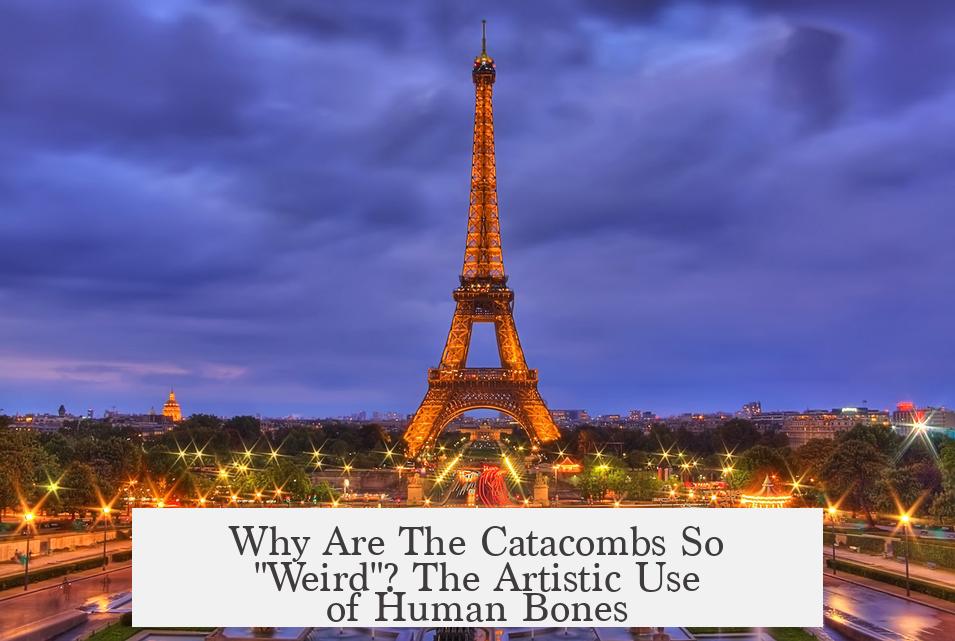
Using bones decoratively isn’t something Paris invented, but they took it to an extreme level.
Across Europe, ossuaries—like the Sedlec Ossuary in the Czech Republic or the Capuchin Crypt in Rome—arranged bones to spur contemplation on mortality. The bones become an art form reminding visitors: life is fleeting.
These displays served a purpose called vanitas or memento mori—Latin phrases emphasizing life’s transience through symbols of death. Instead of just staring at paintings or stones, visitors faced real skeletons arranged thoughtfully.
The Paris Catacombs embraced this tradition but multiplied it by millions. They weren’t content with mere reminders—they created an immersive, haunting experience where every corner whispered mortality.
Philosophy Imprinted in Bone
One poignant example lingers on a Wamba church inscription:
“Como te ves, yo me ví. Como me ves, te verás. Todo acaba en esto aquí. Piensa y no pecarás.”
(“How you see yourself, I saw myself once. How you see me now, you will see yourself. Everything ends like this. Think about this and you will not sin.”)
This kind of blunt reflection reminds visitors to ponder mortality deeply—a kind of philosophical nudge amid the bones.
Transforming Bones into an Underground “Disneyland of the Dead”
Building on engineering safety and ancient traditions, Héricart de Thury elevated the Catacombs to a monument part museum, part theme park.
He named halls and features after classical antiquity—there’s a pillar of Memento and a grand sacellum of Obelisks. Decorative Doric pillars, altars, and etched plaques with poems and maxims line the tunnels. His inscriptions explore fragility, death, and hope in a consoling tone.
Imagine them as early 19th-century motivational posters reminding you: “Life is short, but hey, look at this amazing underground bone palace!”
Science Meets Skeletons: Education in the Catacombs
Héricart de Thury’s scientific spirit shines through. He included a mineralogy cabinet (because fossils rock), alongside a pathology exhibit showcasing diseased bones. There’s even a table highlighting skulls from different perspectives, studying their shapes and sizes.
So the Catacombs were not only for artistically displaying bones. They became a mini-research site, spreading education about death, disease, and natural history wrapped in a gothic experience.
Who Arranged the Bones? The Mystery of Creative License
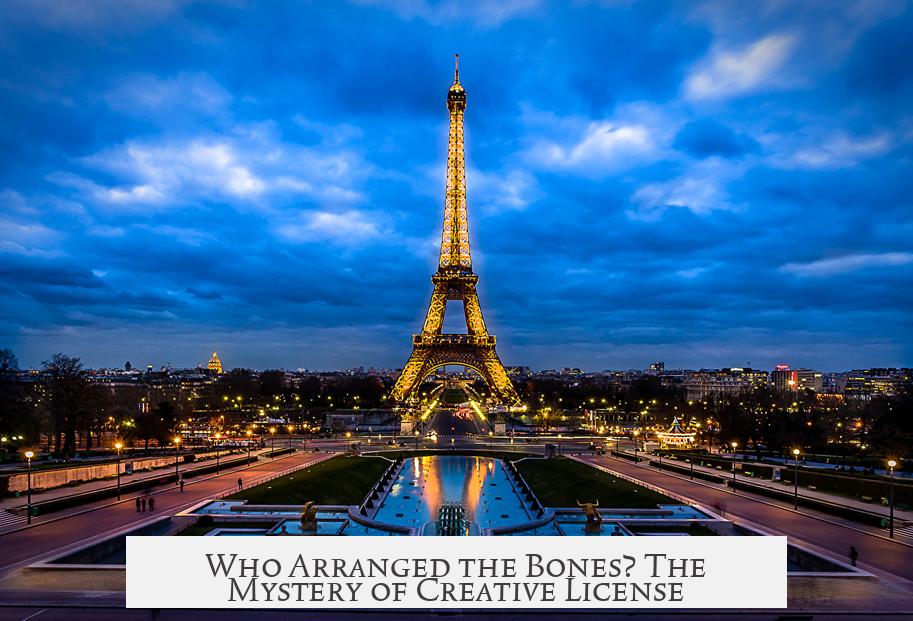
Curiously, Héricart de Thury’s own writings don’t detail the organization of the bone displays. He cataloged catacombs worldwide but skipped describing his masterpiece’s creepy artistry.
According to Alexandra Rayzal from Musée Carnavalet, the decorative bone work may have been left to the workers’ imagination—folk traditions and artistic freedom likely shaped how the bones were stacked and arranged.
Perhaps to early 19th-century Parisians, such symbolic acts required no explanation—they were a natural continuation of centuries of ossuary customs.
Public Reaction: Strange, Soothing, or Simply Sublime?
One 1812 writer captured a surprisingly comforting view:
“We enter this palace of Death; its hideous attributes surround us; the walls are lined with them: heaps of bones curve into arches, rise into columns, and art has been able to form…a kind of mosaic whose regular appearance adds to the profound contemplation that these places inspire…Death, in the Catacombs, has something less repulsive than elsewhere.”
For this observer, the artistic use of bones wasn’t grotesque but a subtle, calming triumph of art over decay. Death’s finality was softened by human creativity and care.
So, Why So Weird? The Big Takeaway
The Paris Catacombs’ weirdness arises from their combination of brutal practicality and deep philosophical artistry. What began as a sanitary solution morphed into a cavernous museum portraying death in its starkest, most poetic form.
With six million moving relics of Parisian souls, this underground labyrinth challenges visitors to confront mortality, reminds us of life’s fleeting nature, and intrigues with stunningly macabre design.
If you wonder why they made the Paris Catacombs so weird, the answer lies in the vision of Héricart de Thury and a centuries-old tradition of using bones to tell stories about humankind. It’s a place where engineering, science, art, and philosophy meet in shadows—making death less frightening, more reflective, and strangely beautiful.
Thinking of Visiting? Some Practical Tips
- Go with a guide. The Catacombs’ winding passages and dense history benefit hugely from a storyteller’s touch.
- Wear sturdy shoes; the portals to this “underground Disneyland of the Dead” involve steps and uneven paths.
- Bring a flashlight and a curious mind—because every corner holds secrets spanning more than just bones.
- Remember, it’s a mass grave and ossuary—respectful silence makes the experience meaningful.
A Comparison: Paris and Other Ossuaries
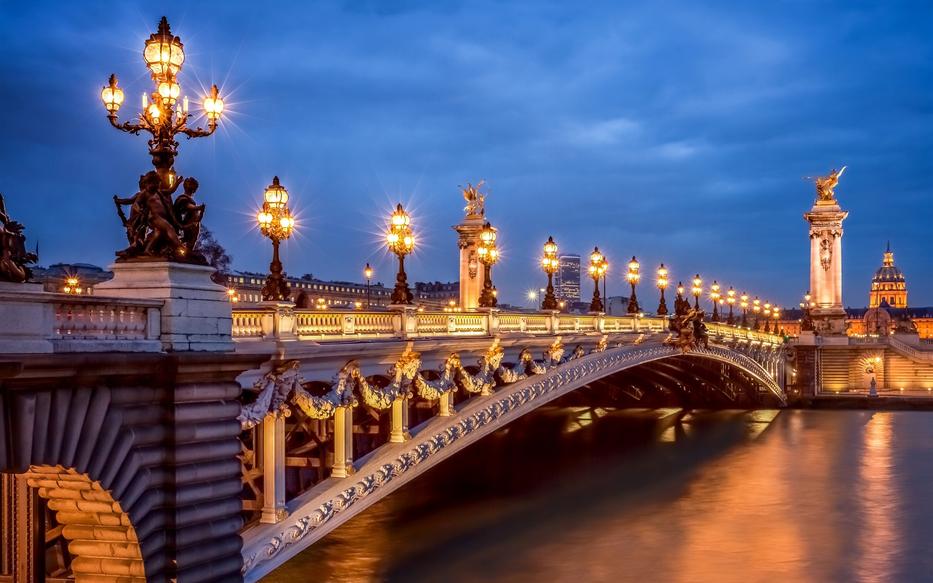
While places like Sedlec Ossuary decorate bones artistically for religious reflection, Paris’s Catacombs take it a notch further, marrying engineering needs with philosophical artistry and turning bones into architectural elements.
Unlike others, Paris blends function, education, and tourism—making it both a grim monument and an engaging, if peculiar, destination.
Final Reflection
The Paris Catacombs remind us that human creativity knows no bounds—even in facing mortality. Their “weirdness” is a testimony to a culture grappling with death in a thoughtful, artistic way. Far from macabre horror, they offer a silent, awe-inspiring reminder: everything ends, but art and memory linger.
